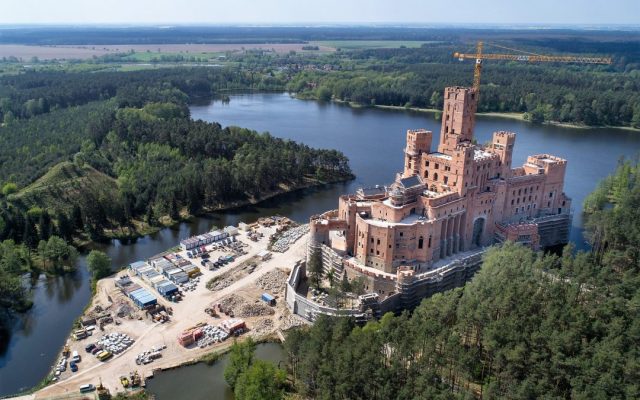
In a captivating blend of medieval inspiration and contemporary controversy, Stobnica Castle stands as a testament to both architectural ambition and environmental concerns. Nestled within the pristine confines of the Notecka Forest in western Poland, a region protected under the European Union’s Natura 2000 network, the castle’s construction has been a source of ongoing legal disputes. Commencing in 2015, the development of Stobnica Castle has faced staunch opposition from environmentalists and conservationists who argue that the project poses a threat to the delicate ecosystem of the protected forest. Despite the legal battles and environmental concerns, Stobnica Castle nears completion, casting an imposing silhouette against the backdrop of the ancient woods.

The castle’s medieval-style architecture, reminiscent of a bygone era, raises questions about the balance between heritage preservation and ecological responsibility. With an estimated investment cost of around 400 million zloty (€85.75 million), the castle is poised to become a unique residence for a private owner that challenges the conventional expectations of modern architectural development in ecologically sensitive areas. The ongoing saga of Stobnica Castle underscores the complex interplay between the desire for cultural preservation and the ambitions of the rich. As the construction inches toward its conclusion, it prompts a broader dialogue on responsible development and the necessity of harmonizing progress with the preservation of natural habitats, especially within the framework of EU-protected areas like the Notecka Forest. The castle’s completion will undoubtedly be a milestone, marking not only the culmination of a substantial investment but also the resolution of a contentious debate about the compatibility of medieval-inspired grandeur with contemporary environmental values.














